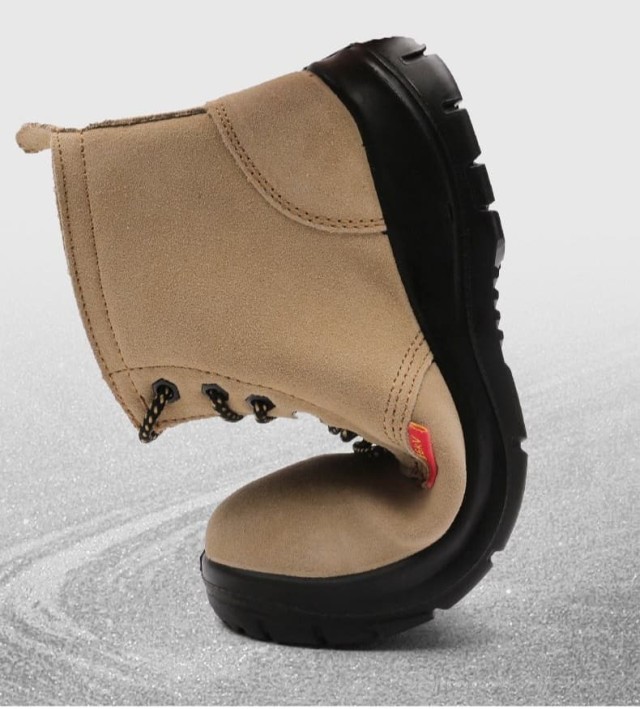When selecting safety trainers, material choices directly impact both protection and long-term wearability. This guide examines how advanced materials address industry-specific demands—from slip resistance in healthcare to lightweight durability for 12-hour shifts—helping you make informed decisions for your workforce.
Choosing the Right Safety Trainer Materials
Balancing Protection and Breathability in Hazardous Environments
Safety trainers must shield feet from impacts, punctures, and electrical hazards while allowing airflow to prevent fatigue. Modern solutions use:
- Mesh panels in non-critical zones (e.g., tongue, sides) to enhance ventilation without compromising safety.
- Waterproof yet breathable membranes like TPU-coated liners for wet environments.
Research shows breathable designs reduce heat stress by up to 30%, critical for workers in foundries or outdoor construction.
Lightweight vs. Durability: Decoding Composite Toe Applications
Composite toe caps (carbon fiber, Kevlar) outperform steel in three key scenarios:
- Long shifts: 20–30% lighter than steel, reducing leg strain over 12-hour workdays.
- Extreme temperatures: Non-conductive materials insulate against cold and prevent heat transfer.
- Security-sensitive sites: Pass through metal detectors effortlessly, ideal for airports or labs.
Did you know? Composite materials meet the same ASTM F2413-18 safety standards as steel but eliminate conductivity risks for electricians.
Slip Resistance and Flexibility Across Industries
How Rubber and TPU Soles Adapt to Floor Conditions
Safety soles are graded by ASTM F-2412-2005 for slip resistance. Key adaptations include:
- Oil-resistant rubber: Deep treads channel liquids away in kitchens or garages.
- TPU (thermoplastic polyurethane): Retains flexibility in freezing temperatures, used in cold storage.
A hospital study found slip-resistant soles reduced fall-related injuries by over 40% compared to standard footwear.
Case Studies: Industry-Specific Needs
Healthcare
- Requirement: Slip-proof soles for tile floors + easy sterilization.
- Solution: Smooth, micro-textured TPU soles resist bodily fluids and disinfectants.
Construction
- Requirement: Puncture protection + ankle support.
- Solution: Multilayer midsoles with steel shanks and lugged rubber soles.
Manufacturing
- Requirement: Static dissipation to protect sensitive electronics.
- Solution: Carbon-infused soles with SD (Static Dissipating) ratings per ASTM standards.
Optimize Your Safety Footwear Strategy with 3515
Every workplace demands a unique balance of protection and comfort. 3515’s expertise in bulk safety footwear manufacturing ensures your teams get:
- Custom material blends for industry-specific hazards.
- Ergonomic designs tested in real 12-hour shifts.
Ready to upgrade your safety gear? Partner with 3515 to develop trainers tailored to your operational risks and comfort priorities.
Related Products
- Durable Leather Moc Toe Work Boots for Wholesale & Custom Manufacturing
- Durable Moc-Toe Wedge Work Boots | Wholesale Manufacturing for Brands
- Wholesale Customizable Suede Safety Boots - Puncture-Proof with Velcro Closure
- Safety Footwear Wholesale Manufacturer for Custom OEM/ODM Production
- Wholesale Safety Footwear Manufacturer for Bulk & Custom OEM Orders
Related Articles
- Moc Toe Safety Boots: When Style Meets Workplace Protection
- How to Choose Slip-Resistant Rubber-Soled Shoes for Maximum Safety
- How Zip-Up Work Boots Combine Speed with Industrial Safety Standards
- How Slip-Resistant Sole Engineering Prevents Workplace Injuries Across Industries
- How Slip-Resistant Outsoles Prevent Injuries and Ensure Tactical Success
















